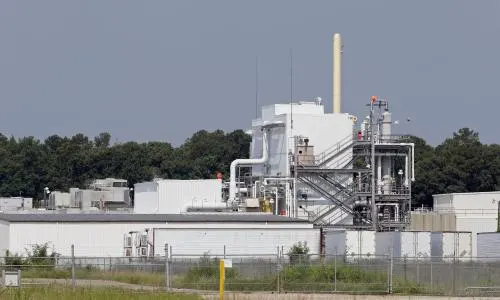Latest reports suggest that the US Environmental Protection Agency is taking what has been described as an unprecedented enforcement action over PFAS water pollution by ordering the chemical giant Chemours’ Parkersburg, West Virginia, plant to stop discharging extremely high levels of toxic PFAS waste into the Ohio River.
Reports show that the river is a drinking water source for 5 million people, and the EPA’s Clean Water Act violation order cites 71 instances between September 2018 to March 2023 in which Chemours’ Washington Works facility discharged more PFAS waste than its pollution permit allowed.
The agency also noted damaged facilities and equipment that appeared to be leaking PFAS waste onto the ground.
PFAS are a class of about 15,000 chemicals often used to make thousands of products across dozens of industries resistant to water, stains and heat.
The chemicals are also said to be ubiquitous and linked at low levels of exposure to cancer, thyroid disease, kidney dysfunction, birth defects, autoimmune disease and other serious health problems.
Among other things, the step by the EPA drew praise from some environmental groups, but at least one noted the permit still allows high levels of PFAS pollution and may not adequately protect the environment and human health. The EPA and states should also be taking similar action against PFAS polluters everywhere, not just Chemours.
Read also: Vietnam reports highest ever temperature of 44.1C
Recall that Washington Works’ PFAS waste poisoned Parkersburg’s water for decades under DuPont’s management, before it spun off Chemours. The situation was said to have led to lawsuits in the early 2000s that dragged on for years, but in 2017 led to $671m in payouts to town residents, an epidemiological study that linked DuPont PFAS to residents’ health problems and a movie about the controversy.
“The Parkersburg community has a long history with this facility and the ever-present threat of PFAS pollution,” Adam Ortiz, the EPA mid-Atlantic regional administrator was quoted as saying in a statement. “This order demonstrates that EPA will take action to safeguard public health and the environment from these dangerous contaminants.”
The EPA is ordering Chemours to rein in its pollution by testing effluents and implementing a plan to remove more of the dangerous chemicals before discharging water. The order cites exceedances for two PFAS compounds, PFOA and HFPO-DA, the latter more frequently known as GenX. Chemours in 2019 recorded GenX levels from one Washington Works pipe at a monthly average of about 38,000 parts per trillion (ppt). The pollution permit’s current limit is 1,400ppt. But the EPA is in the process of lowering GenX’s national drinking water limit to 5ppt.
Story was adapted from the Guardian.
